You are using an out of date browser. It may not display this or other websites correctly.
You should upgrade or use an alternative browser.
You should upgrade or use an alternative browser.
Essential The Official ESPN Insider Thread (ESPN+)
- Thread starter the cool
- Start date
More options
Who Replied?What are the best teams for the star PGs in the 2017 NBA draft?
The 2017 NBA draft is loaded with point guards, and that could have an impact on how teams approach the Feb. 23 trade deadline. Because most of the teams in need of an upgrade at point guard are likely to be in the lottery, there's a chance they'll be able to fill their need without having to trade.
To help understand the impact of the draft on the trade market for point guards such as Goran Dragic of the Miami Heat, Reggie Jackson of the Detroit Pistons, Elfrid Payton of the Orlando Magic and Ricky Rubio of the Minnesota Timberwolves, Chad Ford takes a look at seven teams' chances of drafting a point guard and who might fit best.
Then, Kevin Pelton considers what the Knicks, Bulls, Sixers and others might do if they don't draft a PG.
Chicago Bulls
Odds of a top-5 pick (via ESPN Basketball Power Index projections): 1.1 percent
Chances of drafting a PG: Very slim. We have five point guards projected in the lottery and all are likely to go in the top 10 picks in the draft. Given the current standings, I'm not sure the Bulls will be bad enough to get into the top 10, and they have only a tiny chance of landing in the top five. The other top point guards on our list -- Oklahoma State's Jawun Evans and Xavier's Edmond Sumner -- are ranked in the 20s on our Big Board.
Best PG fit: Shooting is paramount for the Bulls right now. I can't imagine them drafting a point guard who can't shoot, which rules out Kentucky's De'Aaron Fox. Washington's Markelle Fultz would be the best fit for them because of his combination of playmaking and shooting, but they would have to get a top-two pick to grab him. Very slim.
One dark horse for the Bulls is Iowa State's Monte Morris. Fred Hoiberg coached him, and sources say the Bulls' coach loves him. While Morris doesn't have a huge upside, he posts an incredible assist-to-turnover ratio every season and is shooting 40 percent from 3 as a senior. Morris is ranked in the 30s right now, but some teams, including the Bulls, have him ranked much higher. Of course, all of this assumes that Chicago's current front-office members and Hoiberg himself keep their jobs. That's a bigger question at the moment. -- Ford
If they don't draft a PG: The Bulls can clear about $30 million in cap space this summer by waiving Rajon Rondo and stretching the $3 million guaranteed portion of his 2017-18 salary, though that's contingent on renouncing the rights to free agents Michael Carter-Williams, Taj Gibson and Nikola Mirotic. (It also assumes Dwyane Wade picks up his player option.)
Chicago could bring back a couple of those players and try to deal for Jackson or Rubio. Or they could acknowledge that Wade and Jimmy Butler are their real point guards and try to add a floor spacer who can defend point guards instead. -- Pelton
Dallas Mavericks
Odds of a top-5 pick: 32.3 percent
Chances of drafting a PG: Pretty high. If they land in the top five, they can get one of at least three point guards. If they fall in the Nos. 6-10 range, then they should have a great shot at either Fox or France's Frank Ntilikina.
Best PG fit: Sources say the Mavs are very high on Ntilikina. They have some of the best international scouts in the business and think that he's getting lost in the shuffle because of the high-profile play of several college freshmen. Only Fultz and Lonzo Ball rank higher on their board.
Ntilikina is the real deal. He just guided France's under-18 team to a FIBA European championship. He scored 31 points in the title game against Lithuania and made 17 of his 29 3s in the tournament. He's big, aggressive and tough and he plays with a high basketball IQ. -- Ford
If they don't draft a PG: The Mavericks' cap situation will depend on what Dirk Nowitzki decides to do this summer. Dallas will likely turn down his $25 million team option, providing the opportunity to re-sign Nowitzki to a smaller salary, if he decides to return. That would enable the Mavericks to chase the top free agents likely to be on the market -- Jrue Holiday, George Hill and Jeff Teague.
Given coach Rick Carlisle's success with smaller, quick point guards such as J.J. Barea, Patty Mills of the San Antonio Spurs might be an interesting Plan B for Dallas. -- Pelton
Miami Heat
Odds of a top-5 pick: 32.9 percent
Chances of drafting a PG: They'll have a great shot at selecting a top point guard. The question is whether they'll hang onto Dragic and fill a need another way.
Best PG fit: I love UCLA's Ball for them. Ball is an elite playmaker with deep range. He's the type of point guard who makes everyone on the floor better. Given all the Heat's young players, I think having a dominant floor general such as Ball will help bring the entire team together and elevate the games of Justise Winslow, Hassan Whiteside and Tyler Johnson in the process. -- Ford
If they don't draft a PG: The Heat don't currently need a point guard, of course, not with Dragic on the roster. But Dragic will turn 31 in May and is not a long-term solution for a team that might be forced to rebuild.
Expect Miami to monitor the trade market for Dragic as teams strike out in the draft and free agency. -- Pelton
New York Knicks
Odds of a top-5 pick: 6.0 percent
Chances of drafting a PG: No offense to Derrick Rose or Brandon Jennings, but point guard would be New York's biggest need even if both weren't free agents this summer. The Knicks need an elite playmaker to pair with Kristaps Porzingis. The problem is, they are too good to land a top-5 pick and might not even crack the top 10.
Best PG fit: It's tough to say with so much in flux in New York. Is Phil Jackson going to keep his job? What about Jeff Hornacek? Realistically, the Knicks' two best options might be Fox and Ntilikina.
While I have concerns about Fox's shooting, he adds a sizzle that I think would be a great fit in New York. He's the fastest point guard in the draft, and he has the potential to be the best defensive point guard as well. His playmaking skills are top-notch. I think he would be the guy for the Knicks. -- Ford
If they don't draft a PG: The Knicks can clear about $20 million in cap space by renouncing Rose and Jennings, both unrestricted free agents. That would allow them to get into the bidding for Hill, Holiday and Teague. If those point guards land elsewhere, a trade might be New York's backup plan.
Rubio would be an enormous defensive upgrade and a capable pick-and-pop partner for Porzingis ... so the Knicks would probably trade for the older and more expensive Dragic instead. -- Pelton
Orlando Magic
Odds of a top-5 pick: 32.4 percent
Get ready for Markelle Fultz, Lonzo Ball and the 2017 draft, with analysis from Chad Ford and other ESPN experts.
Chances of drafting a PG: I'm an Elfrid Payton fan, but any of the top-5 point guards in this draft would be an upgrade. I don't think the goal in Orlando is to necessarily get younger. However, I think the Magic are still looking for a superstar. If they land any of the top three point guards, he'll have the highest ceiling of anyone on the team.
Best PG fit: I'd love to see Lonzo Ball serving up Aaron Gordon. That's what Gordon needs to take his game to the next level. Those two together would just be awesome. -- Ford
If they don't draft a PG: Everything's up for debate in Orlando, including who's making the decisions if Magic ownership is frustrated after what looks like another lottery season. If the mandate is win now, a trade for a veteran such as Dragic -- possibly giving up this year's first-round pick in return, as Orlando did for Serge Ibaka last summer -- is a likely option. -- Pelton
Philadelphia 76ers
Odds of a top-5 pick: 87.0 percent (not including potential pick swaps)
Chances of drafting a PG: Super high. Coach Brett Brown thinks that Ben Simmons is a point guard and plans to play him as such. But having other playmakers, especially ones who can space the floor, is also a high priority for the Sixers. And if they land the Lakers' pick (which they'll receive if L.A.'s selection falls outside the top three), that gives them a chance to draft both a point guard and a shooting guard.
Best PG fit: I'd love to see Fultz here. His versatile game seems like a perfect fit next to Simmons. He can be as effective off the ball as he is with it, and he would be able to share ballhandling duties with Simmons.
If the Sixers were able to somehow land both Fultz and Kentucky's Malik Monk for their backcourt, I think they'd have a potential championship contender down the road. -- Ford
If they don't draft a PG: Zach Lowe reported last week that the Sixers "will take a hard look at" bringing Holiday back to Philadelphia, where he started his career. Hill also would be an excellent fit alongside Simmons, though joining a lottery team might be a tough sell.
I like Mills as a lower-cost option who remains effective playing off the ball. -- Pelton
Sacramento Kings
Odds of a top-5 pick: 23.5 percent (not including potential pick swaps)
Chances of drafting a PG: High. The Kings have blown several opportunities to get a point guard. I don't think they'll blow it if they get another chance. The odds of them getting a top-three pick are slim -- the Sixers can swap picks with Sacramento if the Kings land in the top 10 with a higher pick than Philly -- so they're probably looking at NC State's Dennis Smith, Fox or Ntilikina.
Best PG fit: Smith might be the best talent available, but scouts are wringing their hands a bit at NC State's poor play and the fact that Smith can take plays off defensively. That's the last thing the Kings need right now.
Fox would add some defensive intensity and elite speed, but his shooting is a question mark. Vlade Divac isn't afraid to go international, and I think the Kings might be the main other team besides the Mavericks to give Ntilikina a shot high in the draft. -- Ford
If they don't draft a PG: The Kings should be able to create max-level cap space this summer by waiving Arron Afflalo, whose contract is just $1.5 million guaranteed through the day after the draft. Still, luring top free agents to a team that has gone more than a decade in the lottery will be challenging, and a trade might be Sacramento's best option. -- Pelton
Why an Alabama team isn't the best champion of the past decade
The Clemson Tigers won the national championship with a heroic fourth-quarter comeback led by Deshaun Watson over the Alabama Crimson Tide. That win and the Tigers' 31-0 victory over Ohio State in the College Football Playoff semifinals each ranked among the top four single-game opponent-adjusted efficiency performances of the season according to our data, as impressive as any pair of victories any team has had to conclude a title run.
Over the course of the season, Clemson had six other games ranked among the 90th percentile in opponent-adjusted efficiency. That's very good, but five other recent national champions had even more such elite performances. Here's our countdown of the five best national champions of the past decade, ranked by frequency of elite single-game performances in the given season.
1. 2008 Florida Gators (13-1)
The championship team that performed at an elite level most frequently in the past decade is best remembered for the impassioned speech by quarterback Tim Tebow following the team's only loss of the year, a 31-30 heartbreaker to Ole Miss. Florida won its next eight games to close out the regular season by a combined score of 414 to 97. Four of the blowouts in that stretch (LSU, Georgia, South Carolina and Florida State) came against teams ranked at the time of the game, and five of the wins ranked among the 90th percentile in single-game opponent-adjusted efficiency. The Gators followed up that streak with a 31-20 victory over then-No. 1 Alabama in the SEC championship, then fended off Oklahoma 24-14 in the BCS national championship. The Gators finished the season ranked No. 2 in our offensive, defensive and special teams efficiency ratings, the only team in the past decade to finish that highly ranked in all three categories.
2. 2015 Alabama Crimson Tide (14-1)
Like the Gators in 2008, the Crimson Tide were tripped up early in the season by Ole Miss before running through the rest of their season unscathed to win the national title. What distinguishes this Crimson Tide team is the road it faced over the course of the season. Every FBS opponent the Crimson Tide played from the first weekend of October through the College Football Playoff finished the year ranked among the top 40 teams in the nation, according to our efficiency ratings. An average team would have been expected to lose 10 or 11 games against the Tide's schedule. Nine of Alabama's final 10 FBS games of the season ranked among the 90th percentile in single-game efficiency, and their 38-0 domination of Michigan State in the playoff semifinal ranked as their most ruthlessly efficient performance of the year.
3. 2012 Alabama Crimson Tide (13-1)
The single most ruthlessly efficient opponent-adjusted performance of the 2012 season was also the most ruthlessly efficient of the past decade. Alabama's crushing 42-14 victory over Notre Dame in the BCS championship -- the Crimson Tide led 35-0 through the first 13 possessions -- ranks as the most dominant win over a top opponent any team has had in the past 10 years. It was one of 10 Alabama victories ranked in the 90th percentile that season and one of six games against FBS opponents that the Crimson Tide didn't allow a single point to be scored before garbage time kicked in. Alabama's elite defense allowed only 0.88 points per opponent drive and allowed only 30.1 percent of available yards (measured from starting field position to end zone) to be gained in non-garbage time.
4. 2013 Florida State Seminoles (14-0)
The Seminoles faced one of the least challenging roads of any national champion, playing only one game before the BCS title game against an opponent that finished the year ranked in the top 25 of our drive efficiency ratings. That win -- a 51-14 pasting of eventual 11-2 Clemson on the road -- was indicative of how dominant the Seminoles were week in and week out. FSU won nine games against FBS opponents by a margin of at least 30 points. In non-garbage time, Florida State's offense averaged 4.06 points per drive and its defense allowed only a single point per opponent drive, a 3.06 net points per drive margin that ranks best among all teams in the past 10 seasons. The Noles' only victory over a fellow top-5 opponent came in a 34-31 comeback over Auburn for the national title.
5. 2009 Alabama Crimson Tide (14-0)
Nick Saban's only undefeated season in Tuscaloosa does not rank as his best in our countdown, even though the record was unblemished. The Tide didn't trip, but they also didn't completely dominate top opponents as frequently as the 2012 and 2015 national champions. In fact, Alabama escaped a pair of near losses to teams ranked outside the top 30 in our drive efficiency ratings down the stretch that season -- a 12-10 victory over Tennessee was won on a blocked field goal and Alabama never reached the end zone; and a 26-21 victory over Auburn in the Iron Bowl required a late-fourth-quarter touchdown drive to win. Those wins weren't particularly impressive, but Alabama capped the season with its best two victories of the year, a 32-13 win over Florida in the SEC championship and a 37-21 win over Texas in the national title game, double-digit wins over the second- and third-best teams in 2009.
Other champions:
6. 2016 Clemson Tigers (14-1)
7. 2010 Auburn Tigers (14-0)
8. 2014 Ohio State Buckeyes (14-1)
9. 2011 Alabama Crimson Tide (12-1)
10. 2007 LSU Tigers (12-2)
THASTUNNA
All Star
Cardinals deserve hefty penalty for hacking scandal
Since former St. Louis Cardinals scouting director Chris Correa first agreed to a plea bargain and acknowledged hacking the computer system of the Houston Astros, many evaluators with other teams have drawn a comparison between the Cardinals and a college football program guilty of major violations.
Even if the club maintains Correa was the only person in the organization who had knowledge of the cyber invasion of the Astros' information -- and a lot of baseball officials would believe in Santa Claus before they ever believe that -- there are questions of institutional control and compliance, and how much the Cardinals' organization competitively benefited from Correa's law-breaking.
This is why many in the industry expect and want commissioner Rob Manfred to hammer the Cardinals with a significant penalty this week, in perhaps the most anticipated ruling since the Alex Rodriguez case. "It has to be that way," one executive said last year. "You can't pretend that this isn't a big deal, and you have to make it hurt."
Rival evaluators have been closely following this case for months, and fair or not, Manfred is swimming upstream against perception as he comes down with a ruling. Bill DeWitt Jr., the Cardinals' chairman and chief executive officer, is seen as a patron saint of Manfred's ascension to his current role. If the penalty is thought to be light, then there will be cynicism about how Manfred's relationship shaped the penalty. In some ways, Manfred is in the same place that NFL commissioner Roger Goodell was in before he hit the New England Patriots and friend Robert Kraft with penalties in the Deflategate case.
The details of Correa's case, revealed in the Houston Chronicle over the weekend, show that Correa repeatedly hacked into the Astros' system.
According to the documents, portions of which remained redacted, Correa intruded into the Astros' "Ground Control" database 48 times and accessed the accounts of five Astros employees. For 2 1/2 years, beginning in January 2012, Correa had unfettered access to the e-mail account of Sig Mejdal, the Astros' director of decision sciences and a former Cardinals employee. Correa worked in St. Louis as an analyst under Mejdal, who came to Houston after the 2011 season with Astros general manager Jeff Luhnow, also a former Cardinals executive.
"(Correa) knew what projects the Astros' analytics department was researching, what concepts were promising and what ideas to avoid," said one of the documents, signed by Michael Chu, the assistant U.S. attorney who prosecuted the case against Correa. "He had access to everything that Sig Mejdal ... read and wrote."
The Cardinals' organization, then, had eyes on the Astros' information, plans and processes; intelligence that Correa and his employers could use in trade talks and in player evaluations. Correa -- and anyone he might've shared the information with -- potentially had knowledge of Houston's intent, its view of its own individual players, and the information it had gleaned from other teams, such as the trade requests.
The most devastating examples of how the Cardinals benefited from the Chronicle story were related to the draft:
Prosecutors offered other insights into Correa's motivations. On April 3, 2013, two months before that year's amateur draft -- the second of three consecutive years in which the Astros had the No. 1 overall pick -- Correa accessed the Astros' list of players they considered drafting, ranked in preferential order, the document shows. He also accessed the scouting observations of Astros amateur scouting director Mike Elias, national cross-checker David Post and regional scout Brian St. Pierre.
That same day, Correa checked the Astros' latest reports on Marco Gonzales, a lefthanded pitcher from Gonzaga who two months later the Cardinals drafted with the 19th overall pick, and Brandon Trinkwon, a shortstop from UC Santa Barbara. Trinkwon became a seventh-round pick, 214th overall, of the Los Angeles Dodgers. With the 215th overall selection, the Cardinals drafted a different shortstop, a Southern California high schooler named Chris Rivera.
On April 30, 2013, Correa accessed the Astros' reports on Hunter Dozier, a third baseman from Stephen F. Austin who became the eighth overall pick by the Kansas City Royals. In addition to examining the hitting reports compiled by Elias and an Astros area scout, Correa viewed the signing bonuses the Astros recommended Dozier be offered if selected.
Correa intruded again the day before the June draft, revisiting the Astros' preferentially ranked list of draft prospects and also viewing the Astros' page for the Cardinals, their main scouting page and their notes as it related to trade discussions with the Cardinals.
With the commissioner's ruling, we will presumably learn whether Manfred and his investigators could establish whether any of Correa's colleagues were aware of his attack on the Astros. Regardless: The facts laid out in the court filing reflect an extraordinarily egregious crime, for which Correa may serve 46 months in prison.
To rival evaluators, it is extremely important that MLB separate the punishment from Correa's legal jeopardy. "They can't say, 'Well, he's in prison, so it's taken care of,'" said one official earlier in this offseason. "And they can't go light in what they do."
Said another evaluator: "It has to be like the front office equivalent of the Pete Rose crime (a lifetime ban for betting on baseball) to show everybody that this is something you can't do. They have to make it hurt."
What's an appropriate penalty? Well, last summer, MLB stripped the Boston Red Sox of its international pool money for signing amateurs for one year, after Boston was found to have violated rules. Some evaluators who spoke about the Red Sox penalty for background believe that what happened in the Boston case was much more commonplace, and that Correa's offense was far more serious.
The Cardinals don't have a first-round pick in the 2017 draft, having surrendered it for compensation in the Dexter Fowler signing earlier this offseason. St. Louis is set to make its first pick at No. 56 overall, in the second round, and they have a competitive balance pick at No. 75 overall.
"They can't just take away the competitive balance pick and then leave it at that," one evaluator said, “because about 20 teams don't even get that [competitive balance pick]. It's an advantage the Cardinals already have over most teams, and taking it away isn't really a penalty."
I asked some evaluators what would be seen as a serious penalty, something that would match the perceived offense. Almost all of them thought that if a lot of the punishment is built around a fine, that would be seen as almost meaningless. "Two million dollars? Five million? It's a drop in the bucket for a team like that," said one exec. "It's whitewash."
Some ideas:
- "If you take away their [international] pool for next year, and their first-round pick in 2018," one evaluator said, "that would send a message."
- Another: "Half of their pool money [for international signings], the top of their draft for a couple of years."
- A third: "High draft picks, and [even] if that means they dig into the 2018 draft, because [the Cardinals] they have to lose something. It has to have an impact."
What Manfred shouldn't do, a lot of evaluators believe, is to cast his decision as if it's only about Correa and that the ramifications disappeared once Correa was fired, because of the lasting ripples of his actions and their impact on the Astros and other teams.
The punishment in the Cardinals' hacking case is near, writes Derrick Goold.
FreedS[ohh]lave
Banned
Barnwell's Super Bowl LI preview: Why I'm predicting a rout
It's not easy to beat Tom Brady in the playoffs, but the blueprints on how to pull it off aren't hard to find. Just about every team who has managed to take down the Patriots over the past decade has done so with pass pressure. The Giants wrote the book on this during the 2007 playoffs, overcoming an undefeated Pats team by getting home with their four star defensive linemen. They repeated the same recipe four years later.
The Giants weren't the only ones. The Ravens upset Brady in 2009 by getting out to an early lead, in part thanks to a Terrell Suggs strip sack. A year later, the Jets won with Mark Sanchez in New England by sacking Brady five times. Last year, the Broncos controlled an incredible Patriots offense by pressuring Brady on 31.1 percent of his dropbacks and knocking him down a staggering 17 times. You can even point the turnaround of New England's win in Super Bowl XLIX to Seahawks pass-rusher Cliff Avril leaving with a concussion in the third quarter; with the pass rush exhausted on the final two drives of the game, Brady went 13-of-15 for 124 yards with two touchdowns while being knocked down just once.
Given the Falcons' dominant offense, it's not a prerequisite for the Falcons to get pressure on Brady if they want to win Super Bowl LI, but it's awfully close to one. If the Falcons do get pressure, they probably will slow down Brady to the point where their offense will be good enough to win. If they don't, they're going to need a perfect performance on the other side of the ball to come out victorious, and that's a lot to ask against a Bill Belichick defense with two weeks to prepare.
Will Atlanta get that pressure? It depends on which Falcons defense shows up.
Beasley mode
The Falcons have been an entirely different pass defense during the playoffs, both in terms of style and performance. Here's Atlanta's blitz rate and pressure rate, split by the regular season and the postseason:
Stat Reg. Season Rk Postseason Rk
Blitz rate 16.9% 30 36.0% 2
Pressure rate 24.9% 27 44.9% 1
It appears that Dan Quinn surreptitiously hired Rex Ryan during Atlanta's playoff bye week, because the Falcons are suddenly one of the most aggressive defenses in football. The Falcons' 36 percent blitz rate in the playoffs would have ranked fifth during the regular season, and their 44.9 percent pressure rate would've been the best in football by a considerable margin. Denver, which led the league in pressure rate, finished the year at 33.6 percent. And while it makes sense that Atlanta would improve its pressure rate by doubling its blitz percentage, its blitzes have been far more successful than you'd expect. During the regular season, the Falcons turned 35.8 percent of their blitzes into pressure, which was 19th in the league. The Giants led the league at 46.8 percent. This postseason, Quinn's defense has turned 53.1 of its blitzes into a quarterback pressure.
It's one thing to bully the sculpted blocking sled of pass protectors the Seahawks rolled out in the divisional round, but the Falcons were able to pressure Aaron Rodgers on 42 percent of his dropbacks in the NFC Championship Game. In part, their decision-making was probably driven by what they wanted to do behind those blitzes. Rodgers carved up Atlanta's zone coverage the first time the two teams played, in Week 8, leading Quinn to dial up man coverage more frequently two weeks ago. Rodgers still made plays, but the Falcons did just enough to disrupt him at the right time. Take the final third down of Green Bay's opening drive, when Rodgers had Randall Cobb open at the sticks but couldn't get the ball to him because the blitzing Deion Jones came untouched:

What's interesting about this sudden upswing in the Atlanta pass rush is that it has become a threat without getting much of an impact from the player who led the league in sacks during the regular season. Vic Beasley Jr. had 15.5 sacks before the playoffs but hasn't even knocked down an opposing quarterback once during the postseason. His only contribution on the stat sheet has been one tipped swing pass against Green Bay. Beasley has been a part of those blitz packages, of course, but he hasn't been the one sealing the deal in January.
In part, that's because the 15.5-sack number overstates Beasley's impact on a week-to-week basis. Every edge rusher picks on bad quarterbacks and linemen, but Beasley enjoyed a disproportionate amount of success against rookies. He got in for 3.5 sacks against Paxton Lynch with the Broncos starting an injured Ty Sambrailo at right tackle. Beasley beat up Jared Goff, who posted the eighth-worst era-adjusted sack rate since the merger, for three sacks, including a strip sack Beasley picked up himself and returned for a score. He sacked Carson Wentz twice, one of which was a coverage sack and another where Wentz didn't feel the pressure around backup right tackle Hal Vaitai and failed to protect the football.
You also don't get 15.5 sacks entirely by accident, and Beasley can be an absolute terror rushing around right tackles. Virtually all of his sacks came lining up as a left defensive end and sprinting around the edge. Beasley's first, second, third and fourth moves are going to be to use his speed to get underneath the right tackle and try to either slap the ball out of a quarterback's hands or take him down. Even his primary countermove, as you can see on this strip sack of Philip Rivers, is to feign an inside rush before cutting back outside.
For a few reasons, I'm skeptical Beasley will be able to have a huge impact on this game in his typical role. (Note: This now guarantees that he will rack up six sacks and win Super Bowl MVP.) One reason is that the Falcons love to line Beasley far outside the right tackle's outside shoulder in what is sometimes referred to as a "wide-nine" technique (an incorrect reference when there's not a tight end out there). It plays to Beasley's strengths as a speed rusher, but it also requires a little bit of extra time for Beasley to get to the quarterback, given that he's taking a longer route. That's not a recipe to get pressure on Brady, who has excellent footwork in the pocket and gets the ball out as quick as anyone in football. Over the past three seasons, Brady has taken 2.32 seconds to get rid of the football, the third-fastest rate in the league.
The second reason is that the Patriots have a right tackle who can hold up against Beasley. Entering the season, Marcus Cannon was viewed as a wildly frustrating utility lineman, blamed, often fairly, for brief spurts of disastrous pass protection when the Pats needed him most, including in that aforementioned 2015 AFC Championship Game. Offensive line stats are murky, but Cannon had been credited for eight sacks across 19 starts in his first five seasons.
Locked in as the team's starting right tackle with Sebastian Vollmer out for the season, Cannon has thrived under the tutelage of legendary offensive line coach Dante Scarnecchia, who returned to the Patriots after two years in retirement. Scarnecchia has worked with Cannon on his technique, specifically by getting him to use his 34-inch arms for additional leverage. Throw in improved conditioning, and Cannon has been a revelation at right tackle, where he has allowed just two sacks all year en route to a contract extension and a second-team All-Pro nod.
Cannon versus Beasley looms as a huge matchup in this game, but the Patriots also might push Beasley off the field with their personnel choices. The Falcons don't like to leave Beasley on the field in running situations, because teams can take advantage of his aggressiveness around the edge with draws. The Packers also exploited Beasley on a fourth-and-2 in the NFC Championship Game with a zone-read play; Rodgers noticed Beasley cheating into the backfield and held onto a handoff before running around Beasley's vacated edge for a first down.
When opposing teams have three or more wideouts on the field, Beasley has played 74.6 percent of snaps. When they have two wideouts or fewer, Beasley's playing time dips to just 19.7 percent of snaps. The Patriots were in those two-or-fewer looks 49.9 percent of the time on offense, which was the fourth-highest rate in the league during the regular season. (That fell to seventh after Rob Gronkowski was injured in Week 10.) Beasley has played only four such snaps during the postseason, so the Falcons will have to make a choice about how they want to use their star edge rusher.
It might seem surprising that the Falcons would be so judicious about using their most athletic lineman, but they're as aggressive as anyone in football in rotating players up front. There's no perfect way to define a rotation, but let's work with this. Beasley, who was moved to strongside linebacker before the season but essentially plays left defensive end, given how frequently he's being used in sub-packages, played 60.8 percent of Atlanta's defensive snaps this season.
None of Atlanta's other pass-rushers -- players who go after the quarterback and don't drop into coverage on a minimum of 70 percent of pass plays -- hit that mark this season. No team in the league had their most heavily used pass-rusher get such a light workload. The Cowboys were next at 63.2 percent, and the league average was 77.5 percent. Furthermore, the Falcons had eight linemen rotating onto the field to go after the quarterback on at least 25 percent of dropbacks. The only team in the league that topped that mark was the Colts with nine.
There's an obvious way for the Patriots to exploit that tendency, and I would be surprised if Belichick and Josh McDaniels missed their opportunity. The Patriots certainly have a quarterback who is comfortable going into the no-huddle while forcing the Falcons to either rush their defensive linemen onto the field or keep tired linemen on the field in roles they don't normally enjoy. It certainly makes sense for the Patriots to be selectively aggressive with tempo and the no-huddle.
For whatever reason, though, the Patriots have mostly avoided the no-huddle for most of the 2016 season. After Brady threw 94 passes out of the no-huddle in 2015, he threw only 20 in the 2016 regular season, going 17-of-20 for 154 yards with two touchdowns. Most of those throws came with the Patriots rushing just before halftime in their two-minute drill.
But New England has gone back to the no-huddle more frequently in recent weeks as Dion Lewis has gotten healthier, which could be telling. The Patriots love to exploit Lewis' versatility by rushing up to the line after a pass play and handing the ball to Lewis against a box full of defensive backs. It would be smart of them to make the same sort of move against the Falcons, who often dare opposing teams to run the ball in smaller boxes. Atlanta put five men or fewer in the box 66 times this season, 22 more times than anybody else in football. Offenses averaged 6.3 yards per carry on those runs and generated 17 first downs while adding 7.7 expected points to their ledger.
After averaging less than three no-huddle plays per game in the regular season, the Pats have gone to the no-huddle 17 times in two playoff games, including 11 snaps against the Steelers in the conference championship game. As Ben Volin of the Boston Globe noted, the Patriots scored two touchdowns and a field goal early on against the Steelers on drives where they upped the tempo.
The wild card, as always with Brady and the Patriots, is the opponent getting interior pressure. In the divisional round, the Texans had a lot of success lining up edge rushers Jadeveon Clowney and Whitney Mercilus in the middle of their defense against the Patriots' interior linemen, particularly in the first half. Clowney blew up a screen, and Mercilus spun past center David Andrews for a drive-ending sack. But the Steelers, as Volin also noted, mysteriously opted against rushing Bud Dupree or James Harrison from similar spots during the conference championship game.
The Falcons had a useful interior pass-rusher in Adrian Clayborn, but he went down with a season-ending biceps tear in the first half of the divisional-round win over the Seahawks. Beasley could line up over center, but it seems unlikely the Falcons would move him there. Atlanta occasionally shifts him inside before the snap to serve as a spy on opposing quarterbacks, and he picked up a couple of sacks by closing on scrambling passers in that role, but he seems locked on the right side of the offense.
The player who could have the most impact as an interior pass-rusher -- and the one who has been at the heart of Atlanta's dynamic defense over the past two games -- is rookie linebacker Deion Jones. He might be the most important player for the Falcons' defense in this game, given his ability to make an impact in multiple ways. Just as it's difficult to imagine Atlanta winning this game without generating pressure, it's hard to figure out how they'll succeed against the Patriots' offense if Jones doesn't play well.
Jones was the anchor in the Atlanta defense during their two playoff wins. He had the critical assignment of spying Russell Wilson and Aaron Rodgers. Rodgers really hurt the Falcons the few times they chose to avoid spying, such as here, where Jones takes Aaron Ripkowski coming out of the backfield and Rodgers runs for 28 yards.
Jones also worked as an occasional blitzer, picking up that critical knockdown of Rodgers on third down to set up a missed field goal on the opening drive. In addition to all of that, Jones is Atlanta's rangiest linebacker in zone coverage, and he also has to occupy the middle of the field on most snaps, with the goal of disrupting drag routes and taking away throwing lanes on slants. Clowney did an incredible job of that near the goal line in the divisional round, disrupting three routes before closing on Brady and laying him out as he tried to scramble for a touchdown.
The Brady problem
The problem with blitzing Brady is that he's Tom Brady. Nobody in the league is better than him against the blitz. When defenses blitzed him this year, Brady went 61-of-99 for 838 yards with 11 touchdowns and zero interceptions, taking just two sacks in the process. His 125.7 passer rating and 90.4 QBR both ranked No. 1 overall. Over the past three years, Brady has posted a league-best 92.2 QBR and 113.6 passer rating against blitzes while taking sacks just 2.7 percent of the time, all the best in the league by a comfortable margin.
And yet, I'm not really sure the Falcons have much of a choice. If they don't blitz, they are probably going to struggle to get pressure on Brady. They have a league-best 40.4 percent pressure rate in the postseason when they haven't blitzed, but that's a 57-dropback sample. During the regular season, Atlanta's pressure rate without blitzing was 22.7 percent, which ranked 21st in the NFL. Brady posted a 119.9 passer rating this year when teams rushed four or fewer and failed to bother him; the only quarterback in the league with a better rating on those same plays was ... Matt Ryan.
While Quinn probably would prefer to have Earl Thomas and Richard Sherman in his defensive backfield and just drop into Cover 3 every single play, the Falcons probably will have to sprinkle in a good amount of man coverage behind those blitzes, along with some fire zones to try to bring an extra man while taking away Brady's hot read. But there's nobody in the league better at transitioning through his reads quickly and knowing where he needs to go with the football than Brady. (Remember those stats I just mentioned?)
When the Falcons do go into that Cover 3 shell, Brady will have plenty of Cover 3 beaters to pick Atlanta apart, including Y-Stick, which I wrote about at length in previewing the Patriots-Seahawks Super Bowl a couple of years ago. I figured in that game the Patriots would target Seahawks slot cornerback Jeremy Lane, and while Lane had an interception before leaving with several serious injuries, the Patriots abused Byron Maxwell in the slot and replacement Tharold Simon on the outside.
The Falcons are down their best defensive player in Desmond Trufant, and while they've been able to get by without Trufant on the field this year, it would sure be nice to have him in the lineup. Instead, they've replaced Trufant in the lineup with 2015 second-rounder Jalen Collins, who has improved after an uneven rookie season and the four-game PED suspension he served to start 2016. At 6-foot-2, Collins has the physicality to compete with bigger Patriots receivers such as Chris Hogan.
Elsewhere, though, the Patriots should be able to create mismatches against Atlanta's two smaller corners, 5-foot-10 Robert Alford and 5-foot-9 undrafted free agent Brian Poole, who will line up in the slot. Against the Packers, Alford and Poole mostly had to hold up with their speed against isolation routes. McDaniels will instead force them to fight through picks when the Patriots run slant/flat combinations. The Packers went with similar concepts near the goal line, with Davante Adams beating Collins on a slant/out combo for a score.
Martellus Bennett is also capable of representing a mismatch in coverage, especially if he's running better after having two weeks to rest his ailing ankle. Gronkowski would have been a major problem in this game, but even without Gronk, the Patriots will try to split out Bennett and isolate him against Alford for back-shoulder throws. When the Falcons are in man coverage, they'll undoubtedly line up rookie safety Keanu Neal against Bennett and hope he can hold up. The Packers went after Neal when he was in coverage on tight end Jared Cook, and Cook caught seven passes for 78 yards on 12 targets (with two drops).
The biggest concern for the Falcons' pass defense, though, might be on throws to James White and Dion Lewis. Atlanta was 26th in the league in DVOA on throws to running backs this year while allowing a league-high 53.5 receiving yards per game to backs. Teams haven't been able to exploit that in the postseason, in part thanks to injury: The Seahawks were without C.J. Prosise, and the Packers lost Ty Montgomery twice during the game and had their starting running back on the field for only 23 snaps.
Quinn is loath to play without at least one deep safety, which means Ricardo Allen will almost always be in center field as the Falcons play Cover 1 Man or Cover 3. The job of covering the backs will fall to Poole, Jones or another rookie, linebacker De'Vondre Campbell. They all have the speed to hold up in coverage, but the Patriots are so clever in creating favorable routes for their backs that it's difficult to foresee Atlanta locking them down all game. In the Super Bowl two years ago, the Patriots were kept alive at times by Shane Vereen, who finished with a team-high 11 catches and six first downs. The Patriots can stretch the Falcons in Cover 3 by using their backs as part of snag concepts, getting into the flat for safe completions while daring the outside corner to stop sinking on the deep corner route.
And, of course, New England's third back lurks as a problem for the Falcons. LeGarrette Blount, the Patriots' power back, is not much of a receiver, but he could give Atlanta fits. The Falcons finished the year 29th in rush defense DVOA, and that was with Clayborn in the lineup. It hasn't really been a concern the past two games, though, in part because the Falcons got ahead in the first half. They did shut down Thomas Rawls for 34 yards on 11 carries, and the combo of Montgomery and Christine Michael went for 28 yards on nine carries. If the Patriots have success throwing early and force Neal out of the box, chances are good they'll be able to run the ball effectively with Blount and hold onto a lead.
A distinct challenge
On paper, the flip side of the ball features a mouthwatering matchup between the league's best offense and its best defense. That's half true. The Falcons do have a truly transcendent attack, featuring what is probably the best first-down offense in the history of football. This unit has averaged 40 points per game in the postseason.
The Patriots' defense isn't quite as good as their No. 1 rank in points allowed. They're 16th in defensive DVOA, with the difference owing to their schedule of opposing offenses (the league's easiest) and the field position afforded them by their offense and kickoffs (the league's best). They've been good in the playoffs, but that also has come against Brock Osweiler and a Steelers team that lost Le'Veon Bell after one quarter. This will be the first time all season they will play a passing offense that ranked any higher than eighth (Pittsburgh) in DVOA.
So do the Falcons have a huge advantage? I'm not so sure. Atlanta's offense is better than New England's defense in a vacuum, but the Patriots seem to match up pretty well with what Atlanta does best on offense. Styles make fights, and specific matchups can create nightmares for what might be the better team in a vacuum, as was the case when the Seahawks romped over an historically dominant Broncos offense three years ago. Let's run through some of those ideas and see if the Patriots represent a particularly bad matchup for one of the great offenses in league history.
The wild card, as always with Brady and the Patriots, is the opponent getting interior pressure. In the divisional round, the Texans had a lot of success lining up edge rushers Jadeveon Clowney and Whitney Mercilus in the middle of their defense against the Patriots' interior linemen, particularly in the first half. Clowney blew up a screen, and Mercilus spun past center David Andrews for a drive-ending sack. But the Steelers, as Volin also noted, mysteriously opted against rushing Bud Dupree or James Harrison from similar spots during the conference championship game.
The Falcons had a useful interior pass-rusher in Adrian Clayborn, but he went down with a season-ending biceps tear in the first half of the divisional-round win over the Seahawks. Beasley could line up over center, but it seems unlikely the Falcons would move him there. Atlanta occasionally shifts him inside before the snap to serve as a spy on opposing quarterbacks, and he picked up a couple of sacks by closing on scrambling passers in that role, but he seems locked on the right side of the offense.
The player who could have the most impact as an interior pass-rusher -- and the one who has been at the heart of Atlanta's dynamic defense over the past two games -- is rookie linebacker Deion Jones. He might be the most important player for the Falcons' defense in this game, given his ability to make an impact in multiple ways. Just as it's difficult to imagine Atlanta winning this game without generating pressure, it's hard to figure out how they'll succeed against the Patriots' offense if Jones doesn't play well.
Jones was the anchor in the Atlanta defense during their two playoff wins. He had the critical assignment of spying Russell Wilson and Aaron Rodgers. Rodgers really hurt the Falcons the few times they chose to avoid spying, such as here, where Jones takes Aaron Ripkowski coming out of the backfield and Rodgers runs for 28 yards.
Jones also worked as an occasional blitzer, picking up that critical knockdown of Rodgers on third down to set up a missed field goal on the opening drive. In addition to all of that, Jones is Atlanta's rangiest linebacker in zone coverage, and he also has to occupy the middle of the field on most snaps, with the goal of disrupting drag routes and taking away throwing lanes on slants. Clowney did an incredible job of that near the goal line in the divisional round, disrupting three routes before closing on Brady and laying him out as he tried to scramble for a touchdown.
The Brady problem
The problem with blitzing Brady is that he's Tom Brady. Nobody in the league is better than him against the blitz. When defenses blitzed him this year, Brady went 61-of-99 for 838 yards with 11 touchdowns and zero interceptions, taking just two sacks in the process. His 125.7 passer rating and 90.4 QBR both ranked No. 1 overall. Over the past three years, Brady has posted a league-best 92.2 QBR and 113.6 passer rating against blitzes while taking sacks just 2.7 percent of the time, all the best in the league by a comfortable margin.
And yet, I'm not really sure the Falcons have much of a choice. If they don't blitz, they are probably going to struggle to get pressure on Brady. They have a league-best 40.4 percent pressure rate in the postseason when they haven't blitzed, but that's a 57-dropback sample. During the regular season, Atlanta's pressure rate without blitzing was 22.7 percent, which ranked 21st in the NFL. Brady posted a 119.9 passer rating this year when teams rushed four or fewer and failed to bother him; the only quarterback in the league with a better rating on those same plays was ... Matt Ryan.
While Quinn probably would prefer to have Earl Thomas and Richard Sherman in his defensive backfield and just drop into Cover 3 every single play, the Falcons probably will have to sprinkle in a good amount of man coverage behind those blitzes, along with some fire zones to try to bring an extra man while taking away Brady's hot read. But there's nobody in the league better at transitioning through his reads quickly and knowing where he needs to go with the football than Brady. (Remember those stats I just mentioned?)
When the Falcons do go into that Cover 3 shell, Brady will have plenty of Cover 3 beaters to pick Atlanta apart, including Y-Stick, which I wrote about at length in previewing the Patriots-Seahawks Super Bowl a couple of years ago. I figured in that game the Patriots would target Seahawks slot cornerback Jeremy Lane, and while Lane had an interception before leaving with several serious injuries, the Patriots abused Byron Maxwell in the slot and replacement Tharold Simon on the outside.
The Falcons are down their best defensive player in Desmond Trufant, and while they've been able to get by without Trufant on the field this year, it would sure be nice to have him in the lineup. Instead, they've replaced Trufant in the lineup with 2015 second-rounder Jalen Collins, who has improved after an uneven rookie season and the four-game PED suspension he served to start 2016. At 6-foot-2, Collins has the physicality to compete with bigger Patriots receivers such as Chris Hogan.
Elsewhere, though, the Patriots should be able to create mismatches against Atlanta's two smaller corners, 5-foot-10 Robert Alford and 5-foot-9 undrafted free agent Brian Poole, who will line up in the slot. Against the Packers, Alford and Poole mostly had to hold up with their speed against isolation routes. McDaniels will instead force them to fight through picks when the Patriots run slant/flat combinations. The Packers went with similar concepts near the goal line, with Davante Adams beating Collins on a slant/out combo for a score.
Martellus Bennett is also capable of representing a mismatch in coverage, especially if he's running better after having two weeks to rest his ailing ankle. Gronkowski would have been a major problem in this game, but even without Gronk, the Patriots will try to split out Bennett and isolate him against Alford for back-shoulder throws. When the Falcons are in man coverage, they'll undoubtedly line up rookie safety Keanu Neal against Bennett and hope he can hold up. The Packers went after Neal when he was in coverage on tight end Jared Cook, and Cook caught seven passes for 78 yards on 12 targets (with two drops).
The biggest concern for the Falcons' pass defense, though, might be on throws to James White and Dion Lewis. Atlanta was 26th in the league in DVOA on throws to running backs this year while allowing a league-high 53.5 receiving yards per game to backs. Teams haven't been able to exploit that in the postseason, in part thanks to injury: The Seahawks were without C.J. Prosise, and the Packers lost Ty Montgomery twice during the game and had their starting running back on the field for only 23 snaps.
Quinn is loath to play without at least one deep safety, which means Ricardo Allen will almost always be in center field as the Falcons play Cover 1 Man or Cover 3. The job of covering the backs will fall to Poole, Jones or another rookie, linebacker De'Vondre Campbell. They all have the speed to hold up in coverage, but the Patriots are so clever in creating favorable routes for their backs that it's difficult to foresee Atlanta locking them down all game. In the Super Bowl two years ago, the Patriots were kept alive at times by Shane Vereen, who finished with a team-high 11 catches and six first downs. The Patriots can stretch the Falcons in Cover 3 by using their backs as part of snag concepts, getting into the flat for safe completions while daring the outside corner to stop sinking on the deep corner route.
And, of course, New England's third back lurks as a problem for the Falcons. LeGarrette Blount, the Patriots' power back, is not much of a receiver, but he could give Atlanta fits. The Falcons finished the year 29th in rush defense DVOA, and that was with Clayborn in the lineup. It hasn't really been a concern the past two games, though, in part because the Falcons got ahead in the first half. They did shut down Thomas Rawls for 34 yards on 11 carries, and the combo of Montgomery and Christine Michael went for 28 yards on nine carries. If the Patriots have success throwing early and force Neal out of the box, chances are good they'll be able to run the ball effectively with Blount and hold onto a lead.
A distinct challenge
On paper, the flip side of the ball features a mouthwatering matchup between the league's best offense and its best defense. That's half true. The Falcons do have a truly transcendent attack, featuring what is probably the best first-down offense in the history of football. This unit has averaged 40 points per game in the postseason.
The Patriots' defense isn't quite as good as their No. 1 rank in points allowed. They're 16th in defensive DVOA, with the difference owing to their schedule of opposing offenses (the league's easiest) and the field position afforded them by their offense and kickoffs (the league's best). They've been good in the playoffs, but that also has come against Brock Osweiler and a Steelers team that lost Le'Veon Bell after one quarter. This will be the first time all season they will play a passing offense that ranked any higher than eighth (Pittsburgh) in DVOA.
So do the Falcons have a huge advantage? I'm not so sure. Atlanta's offense is better than New England's defense in a vacuum, but the Patriots seem to match up pretty well with what Atlanta does best on offense. Styles make fights, and specific matchups can create nightmares for what might be the better team in a vacuum, as was the case when the Seahawks romped over an historically dominant Broncos offense three years ago. Let's run through some of those ideas and see if the Patriots represent a particularly bad matchup for one of the great offenses in league history.
Stopping Julio ... and everyone else
I don't need to tell you about Belichick's philosophy of taking away the opposing team's best weapon, right? Most commonly brought up in reference to the Patriots beating up Marshall Faulk during their dramatic upset victory in Super Bowl XXXVI, Belichick's defensive scheme is designed to eliminate the opposing team's best player and trust that the rest of his unit can hold up against a weakened offense. Your move, Julio Jones.
When the opponent's best player has been a wide receiver, the Patriots have been pretty consistent. Instead of assigning their No. 1 cornerback to the opposing team's top wideout, they've given that assignment to their No. 2 cornerback and given him consistent help over the top with a safety. The No. 1 cornerback has then gone on the opposing team's second-best wide receiver, and for the Patriots, things usually have gone swell.
As Domonique Foxworth noted for The Undefeated two weeks ago, though, the Patriots have mixed things up more in 2016. Malcolm Butler, their top cornerback, has covered some opposing No. 1 wideouts. He saw a lot of Antonio Brown in Week 7 and again regularly matched up with him in the conference championship game.
The Patriots might have a reputation for taking away the opposing team's best weapon, but how effective are they when they go up against truly transcendent wide receivers like the one they're about to face Sunday? They just held Brown to seven catches for 77 yards in the AFC Championship Game, and like Jones, Brown was a first-team All-Pro. How have Belichick's defenses done on the whole against first-team All-Pro wideouts, though?
I went back through 2000 and identified every time a first-team Associated Press All-Pro wide receiver faced off against the Patriots, either in the regular season or playoffs. (I didn't include wide receivers who made the All-Pro team for their duties on special teams, such as Devin Hester.) I took out their stats against the Patriots to find their average regular-season performance that year and then compared it with what they did against New England. Playoff games are asterisked. The numbers are pretty interesting:
vs. League vs. Patriots
Year Player Team Rec Yds TD Rec Yds TD
2000 Randy Moss Vikings 5 94 1 2 20 0
2004* Terrell Owens Eagles 6 86 1 9 122 0
2005 Steve Smith Panthers 7 102 1 4 34 0
2006 Chad Johnson Bengals 5 87 0 6 64 0
2006 Marvin Harrison Colts 6 81 1 8 145 2
2006* Marvin Harrison Colts 6 81 1 4 41 0
2007 Terrell Owens Cowboys 5 92 1 6 66 1
2008 Larry Fitzgerald Cardinals 6 89 1 3 101 1
2009 Andre Johnson Texans 6 100 1 6 65 0
2010 Reggie Wayne Colts 7 83 0 8 107 1
2013 Josh Gordon Browns 6 115 1 7 151 1
2015 Antonio Brown Steelers 8 113 1 9 133 1
2016 Antonio Brown Steelers 7 84 1 7 106 0
2016* Antonio Brown Steelers 7 84 1 7 77 0
87 1291 12 86 1232 7
In 14 games, the first-team All-Pros basically performed like they were first-team All-Pros against the Patriots. The notable difference came in touchdowns, which is in part because I chose to round the totals to make it easier to read. If I went with partial touchdowns for each of the 14 regular-season estimates, these stars would have been expected to score 10.1 touchdowns in 14 games. The Patriots holding them to seven is still preferable, but I'm not sure how meaningful a difference that is, given the variance of touchdowns. New England also was 8-6 in those 14 games.
The last time Belichick faced Jones was in 2013, in Week 4 of what ended up as a five-week season for Jones, thanks to a foot injury that continues to cause him problems, although problems are all relative. Jones, after all, was reportedly suffering from three separate foot injuries heading into the NFC Championship Game and ran through the Packers for only 180 yards and two touchdowns. We all need to injure our feet.
Back in 2013, it's fair to say Belichick and Jones battled to a draw. Julio finished the day with six catches for 108 yards, most of which came in the fourth quarter as the Falcons launched a comeback. After Brady fumbled away a fourth-and-1 sneak to seal the game, Ryan hit Jones on a 49-yard pass to set up first-and-10 from the Patriots' 13-yard line, down 30-23 with 59 seconds to go. Atlanta promptly went four-and-out, though, handing the game to New England.
Jones needed 13 targets to get to 108 yards. He spent most of the day going up against New England's top cornerback at the time, Aqib Talib, who got in his face at the line of scrimmage and tried to redirect or disrupt his routes with handfighting. Jones' success in the second half was almost exclusively against opposite corner Alfonzo Dennard, who was overmatched even with safety help over the top. Talib seemed to spend a fair amount of the game against Jones without much help, although the Patriots spent a fair amount of time in Cover 2 or Cover 4 and dared the Falcons to run with Jacquizz Rodgers against a light box.
And that brings me to an important point: The Falcons' running game and whether it's successful will dictate a lot of what the Patriots are able to do with their defense Sunday. When the Patriots played with two deep safeties and defended the run with six men in the box during the regular season, they allowed 4.13 yards per carry, the third-best rate in the league. The Falcons rarely ran against light boxes -- 126 times to be exact, the lowest mark in the league by 20 attempts -- and weren't able to take advantage of the opportunity, averaging a league-low 4.04 yards per carry on those plays.
Atlanta was instead the second-best team in the league (5.36 yards per rush) against boxes stacked with eight men or more. The Patriots held up in those situations, though; they allowed just 53 yards on 28 rushing attempts, an average of 1.89 yards per attempt. As you might suspect, a run defense that is good regardless of how many men it has in the box rates out as pretty effective: The Pats finished the year fourth in rush defense DVOA.
I don't need to tell you about Belichick's philosophy of taking away the opposing team's best weapon, right? Most commonly brought up in reference to the Patriots beating up Marshall Faulk during their dramatic upset victory in Super Bowl XXXVI, Belichick's defensive scheme is designed to eliminate the opposing team's best player and trust that the rest of his unit can hold up against a weakened offense. Your move, Julio Jones.
When the opponent's best player has been a wide receiver, the Patriots have been pretty consistent. Instead of assigning their No. 1 cornerback to the opposing team's top wideout, they've given that assignment to their No. 2 cornerback and given him consistent help over the top with a safety. The No. 1 cornerback has then gone on the opposing team's second-best wide receiver, and for the Patriots, things usually have gone swell.
As Domonique Foxworth noted for The Undefeated two weeks ago, though, the Patriots have mixed things up more in 2016. Malcolm Butler, their top cornerback, has covered some opposing No. 1 wideouts. He saw a lot of Antonio Brown in Week 7 and again regularly matched up with him in the conference championship game.
The Patriots might have a reputation for taking away the opposing team's best weapon, but how effective are they when they go up against truly transcendent wide receivers like the one they're about to face Sunday? They just held Brown to seven catches for 77 yards in the AFC Championship Game, and like Jones, Brown was a first-team All-Pro. How have Belichick's defenses done on the whole against first-team All-Pro wideouts, though?
I went back through 2000 and identified every time a first-team Associated Press All-Pro wide receiver faced off against the Patriots, either in the regular season or playoffs. (I didn't include wide receivers who made the All-Pro team for their duties on special teams, such as Devin Hester.) I took out their stats against the Patriots to find their average regular-season performance that year and then compared it with what they did against New England. Playoff games are asterisked. The numbers are pretty interesting:
vs. League vs. Patriots
Year Player Team Rec Yds TD Rec Yds TD
2000 Randy Moss Vikings 5 94 1 2 20 0
2004* Terrell Owens Eagles 6 86 1 9 122 0
2005 Steve Smith Panthers 7 102 1 4 34 0
2006 Chad Johnson Bengals 5 87 0 6 64 0
2006 Marvin Harrison Colts 6 81 1 8 145 2
2006* Marvin Harrison Colts 6 81 1 4 41 0
2007 Terrell Owens Cowboys 5 92 1 6 66 1
2008 Larry Fitzgerald Cardinals 6 89 1 3 101 1
2009 Andre Johnson Texans 6 100 1 6 65 0
2010 Reggie Wayne Colts 7 83 0 8 107 1
2013 Josh Gordon Browns 6 115 1 7 151 1
2015 Antonio Brown Steelers 8 113 1 9 133 1
2016 Antonio Brown Steelers 7 84 1 7 106 0
2016* Antonio Brown Steelers 7 84 1 7 77 0
87 1291 12 86 1232 7
In 14 games, the first-team All-Pros basically performed like they were first-team All-Pros against the Patriots. The notable difference came in touchdowns, which is in part because I chose to round the totals to make it easier to read. If I went with partial touchdowns for each of the 14 regular-season estimates, these stars would have been expected to score 10.1 touchdowns in 14 games. The Patriots holding them to seven is still preferable, but I'm not sure how meaningful a difference that is, given the variance of touchdowns. New England also was 8-6 in those 14 games.
The last time Belichick faced Jones was in 2013, in Week 4 of what ended up as a five-week season for Jones, thanks to a foot injury that continues to cause him problems, although problems are all relative. Jones, after all, was reportedly suffering from three separate foot injuries heading into the NFC Championship Game and ran through the Packers for only 180 yards and two touchdowns. We all need to injure our feet.
Back in 2013, it's fair to say Belichick and Jones battled to a draw. Julio finished the day with six catches for 108 yards, most of which came in the fourth quarter as the Falcons launched a comeback. After Brady fumbled away a fourth-and-1 sneak to seal the game, Ryan hit Jones on a 49-yard pass to set up first-and-10 from the Patriots' 13-yard line, down 30-23 with 59 seconds to go. Atlanta promptly went four-and-out, though, handing the game to New England.
Jones needed 13 targets to get to 108 yards. He spent most of the day going up against New England's top cornerback at the time, Aqib Talib, who got in his face at the line of scrimmage and tried to redirect or disrupt his routes with handfighting. Jones' success in the second half was almost exclusively against opposite corner Alfonzo Dennard, who was overmatched even with safety help over the top. Talib seemed to spend a fair amount of the game against Jones without much help, although the Patriots spent a fair amount of time in Cover 2 or Cover 4 and dared the Falcons to run with Jacquizz Rodgers against a light box.
And that brings me to an important point: The Falcons' running game and whether it's successful will dictate a lot of what the Patriots are able to do with their defense Sunday. When the Patriots played with two deep safeties and defended the run with six men in the box during the regular season, they allowed 4.13 yards per carry, the third-best rate in the league. The Falcons rarely ran against light boxes -- 126 times to be exact, the lowest mark in the league by 20 attempts -- and weren't able to take advantage of the opportunity, averaging a league-low 4.04 yards per carry on those plays.
Atlanta was instead the second-best team in the league (5.36 yards per rush) against boxes stacked with eight men or more. The Patriots held up in those situations, though; they allowed just 53 yards on 28 rushing attempts, an average of 1.89 yards per attempt. As you might suspect, a run defense that is good regardless of how many men it has in the box rates out as pretty effective: The Pats finished the year fourth in rush defense DVOA.
Devonta Freeman and Tevin Coleman truly excelled in creating big plays, which will be a point of huge contention Sunday. The Falcons had seven runs of 30 yards or more this year, a figure topped only by the Bills, who ran the ball 78 more times than Atlanta's 421 attempts. The only problem is that the Patriots allowed just one run of 30 yards or more, and that was to David Johnson in the season opener.
Atlanta's running backs aren't the only ones who create big plays. Their receivers do an excellent job of generating huge gains, particularly after the catch. You might remember Jones stepping over LaDarius Gunter on an innocuous-looking in route before taking it 73 yards to the house in the NFC Championship Game. Eight Falcons receivers had a catch of 30 yards or more this year. Levine Toilolo had four. Levine Toilolo! The Falcons had 29 such receptions this year, the second-highest total in the league behind ... the Patriots, who had 30.
Ryan's receivers do their best work after the catch, which will be a huge deciding factor in this game. Something will have to give. Although Ryan's passes traveled an average of 8.3 yards in the air, which was 11th in the league, the Falcons were the most devastating team in football after the catch. They averaged 6.2 yards after catch (YAC) on Ryan's completions, the highest rate in the league. The only other team over 6 yards per catch was Brady's Patriots, whose average pass traveled nearly 1 full yard less than Ryan. Shorter passes tend to produce more YAC.
The Patriots' defense will have something to say about that. They're the best defense in the league in slowing down receivers with the football in their hands. Matt Patricia's unit allowed a league-low 4.1 YAC on opposing receptions this season. New England allowed only 16 pass plays of 30 yards or more this season, the fifth fewest in the league and an impressive figure, given that teams threw the seventh-most passes in the league against them. The Patriots probably can't stop Ryan altogether, but if they tackle after the catch and force the Falcons to march down the field, they have a decent shot of coming up with stops and/or forcing them into field goals.
Belichick doesn't blitz much with this current group of players; the 20.9 percent blitz rate the Patriots posted during the regular season was similar to that of the Falcons, but the 26.8 percent pressure rate New England generated was just about league average. The Pats have been more likely to get pressure with four rushers before the playoffs, and because their secondary is better, they're better at holding up when they don't get after the quarterback. The 91.7 passer rating they allowed without pressure doesn't sound great, but it was the seventh-best mark in the league.
Belichick has to be more judicious about where and when he blitzes Ryan than Packers defensive coordinator Dom Capers, who threw out a blitz at the wrong time during the NFC Championship Game. With seven seconds left in the first half and the Falcons facing a third-and-1 on the Packers' 5-yard line with no timeouts, Capers could have told his defensive backs to just grab the opposing receivers and drag them down for holding, which would have blown up the play and forced Atlanta to either kick a field goal or attempt one play for a touchdown from the 2½-yard line. The NFL basically allows teams to do this once, as the 49ers did to the Saints earlier this season.
Instead, Capers sent a big blitz at Ryan, perhaps hoping to get a sack, which would have ended the half. He also left Gunter one-on-one on the sideline against Julio Jones with no safety help. The result was an undefendable back-shoulder toss to Jones for a 5-yard score.
The game plan for the Patriots isn't as simple as stopping Jones and assuming the Atlanta offense will fall apart as a result. While it might have been true in the past that the Falcons revolved around their star wideout, Kyle Shanahan has built an attack that can thrive with or without Jones on the field, at least this season. Including the playoffs, Ryan has thrown 468 passes with Jones on the field, producing a 118.2 passer rating and an 86.5 QBR. With Jones on the bench, either for a rest or during the games he missed with an injury, Ryan has thrown 141 passes and actually been even more productive: 121.9 passer rating and a QBR of 88.5.
The Patriots do an excellent job of communicating on defense and transitioning coverage responsibilities between defenders, which is extremely important when teams place an emphasis on stacking receivers to try to create confusion and mismatches before and immediately after the snap. The Steelers are one of the better teams in the league at doing so, and the Falcons aren't far behind.
Pittsburgh did create mismatches at times against one specific defender, though, and he'll need to play better in the Super Bowl. Eric Rowe has had an up-and-down season during his debut year with the Patriots, and the Steelers repeatedly went after him during the AFC Championship Game. Pittsburgh targeted him with a go route out of the slot on the first third down of the game, with Roethlisberger narrowly overthrowing Sammie Coates. The Steelers later went with Cobi Hamilton in a reduced split and cleared out the field to have him run a deep out against Rowe, but Roethlisberger's throw was again off the mark and gave Rowe a chance to recover.
Rowe would pick off a badly underthrown Roethlisberger pass in the second half, but Roethlisberger also picked up two 30-yard gains against Rowe's side of the field in zone coverage. (One was a perfect throw, splitting Rowe and Devin McCourty in Cover 2.) The Falcons aren't naive. They're going to try to get Mohamed Sanu and Taylor Gabriel alone against Rowe in space and hope their receivers win a matchup that should pretty clearly be in their favor.
Belichick will not hesitate to make in-game changes if necessary. During his last Super Bowl trip, the Seahawks only found offensive success at first by turning to little-used backup receiver Chris Matthews, whose 6-foot-5 frame made him a mismatch for 5-foot-10 slot corner Kyle Arrington. But midgame, Belichick benched Arrington and moved 6-foot-4 Brandon Browner onto Matthews, neutralizing him. The player he inserted into the game in Arrington's place, of course, was Malcolm Butler.
Other factors
These two teams are roughly similar in terms of overall special-teams performance, with the Patriots ranking seventh in special teams DVOA and the Falcons eighth. They got there in different ways, though. The Falcons were driven by Matt Bryant's work on field goals, which was worth 10.9 points of field position, the second-best mark in the league. They were roughly league average across the rest of the special-teams continuum.
The Patriots, meanwhile, did excellent work on kickoffs, where they ranked second in the league, and punts, ranking third, but were middling on returns and scoring kick attempts. There are reasons to think they might be better in the Super Bowl. They've stuck Julian Edelman on punt returns, where he has been much better than Danny Amendola and Cyrus Jones. They also have Lewis on kick returns after Lewis missed most of the season; he had just two kickoff returns during the regular season, but he took a 98-yard return to the house against the Texans in the divisional round.
It also seems dangerous to count out New England's star kicker, Stephen Gostkowski, even though this has been a wildly frustrating season for him. Gostkowski struggled early in the year, going 11-of-14 (78.5 percent) on field goals and 24-of-26 on extra points. After the Week 9 bye, he has been better: 21-for-23 (91.3 percent) on field goals and 29-for-31 on extra points, missing one against the Steelers in the AFC Championship Game. Gostkowski was an average kicker on the whole this year -- he was worth 0.1 points of field position -- but years of excellent performance suggest the first half of 2016 was an outlier. I would suspect the Patriots have a special-teams advantage Sunday, although they will have to hope Nate Ebner is cleared after suffering a concussion in the AFC Championship Game.
Ebner is the notable injury for the Patriots. The Falcons are dealing with injuries to two star offensive players in Jones and Alex Mack, both of whom will play barring some stunning turn of events. Mack missed the week of practice after the NFC Championship Game with an ankle injury, although he came back after suffering the injury in the second quarter against the Packers while missing just seven plays. Mack probably has a high ankle sprain, which won't be fun and could limit his effectiveness in reaching defensive tackles as the Falcons run the football, but it shouldn't prevent him from suiting up. Ask the Packers if Jones can run with his foot ailments.
It's also fair to say the Falcons you've seen this postseason have been a little lucky. They deserved to win both their games, but they received some help in terms of fumble recoveries. Atlanta has recovered each of the five fumbles in its two games, which is essentially a gift. Evidence suggests fumble-recovery rates are entirely random after accounting for where they occur on the field, and the best number to use as an estimate of each team's expected recovery rate is 50 percent. Indeed, the Falcons were 14-of-29 (48.3 percent) on recoveries during the regular season.
Those fumbles have come in valuable situations. Against Seattle, the Falcons recovered a botched snap and scored a touchdown two plays later, although a Seahawks fumble recovery would have been wiped out by offsides. Ryan was later strip-sacked on his 23-yard line, which would have given the Seahawks a short field early in the fourth quarter.
They were even more important against Green Bay. Jalen Collins stripped Aaron Ripkowski as he was running toward the end zone, preventing a first-and-goal situation, and Collins recovered the ball in the end zone for a touchback. The Falcons fell on a poorly timed snap that hit Gabriel on a would-be jet sweep at midfield even though Packers linebacker Jake Ryan had a clear first crack at it. And then they managed to recover a bad snap to Ryan on the Packers' 1-yard line before scoring on the following play.
In a closer game, those plays are far more meaningful than they ended up seeming otherwise. The Falcons aren't "due" to miss out on some fumbles -- that's the gambler's fallacy -- but we would expect them to recover about half of the fumbles in the Super Bowl. The Patriots, meanwhile, have been 2-for-3 on their recoveries this postseason.
The pick
This game keeps coming back to that pass-rush problem for me. It's tough to believe the two most recent games we've seen, with the Falcons suddenly morphing into the '85 Bears of pass pressure, are more meaningful than the 16 other games we saw, where their pass rush was relatively tame. If they move Beasley over center and target Joe Thuney and David Andrews in pass protection or get an incredible game out of Deion Jones, maybe the pass rush shows up, but they haven't gotten much pressure with four men and are facing a quarterback who kills blitzes before they even get home.
Likewise, the Patriots take away the big plays the Falcons thrive upon on offense. The Falcons are excellent at using their offense on first down to set up manageable third downs, but the Patriots have a great run defense and should be able to hold up against Atlanta's secondary receivers in coverage. Atlanta is converting on an unreal 64 percent of its third downs this postseason, up from 42.1 percent in the regular season, but that's not really sustainable.
Don't get it twisted: The Falcons are a great team. It's not a fluke they made it here, and I think I probably would have picked them to beat just about any of the other teams from the AFC. The Patriots are just a nightmare matchup for what the Falcons do well. Unless they manage to hold onto the suffocating pass rush they've shown over the past two games, the Falcons seem likely to come up short.
Patriots 34, Falcons 17
Atlanta's running backs aren't the only ones who create big plays. Their receivers do an excellent job of generating huge gains, particularly after the catch. You might remember Jones stepping over LaDarius Gunter on an innocuous-looking in route before taking it 73 yards to the house in the NFC Championship Game. Eight Falcons receivers had a catch of 30 yards or more this year. Levine Toilolo had four. Levine Toilolo! The Falcons had 29 such receptions this year, the second-highest total in the league behind ... the Patriots, who had 30.
Ryan's receivers do their best work after the catch, which will be a huge deciding factor in this game. Something will have to give. Although Ryan's passes traveled an average of 8.3 yards in the air, which was 11th in the league, the Falcons were the most devastating team in football after the catch. They averaged 6.2 yards after catch (YAC) on Ryan's completions, the highest rate in the league. The only other team over 6 yards per catch was Brady's Patriots, whose average pass traveled nearly 1 full yard less than Ryan. Shorter passes tend to produce more YAC.
The Patriots' defense will have something to say about that. They're the best defense in the league in slowing down receivers with the football in their hands. Matt Patricia's unit allowed a league-low 4.1 YAC on opposing receptions this season. New England allowed only 16 pass plays of 30 yards or more this season, the fifth fewest in the league and an impressive figure, given that teams threw the seventh-most passes in the league against them. The Patriots probably can't stop Ryan altogether, but if they tackle after the catch and force the Falcons to march down the field, they have a decent shot of coming up with stops and/or forcing them into field goals.
Belichick doesn't blitz much with this current group of players; the 20.9 percent blitz rate the Patriots posted during the regular season was similar to that of the Falcons, but the 26.8 percent pressure rate New England generated was just about league average. The Pats have been more likely to get pressure with four rushers before the playoffs, and because their secondary is better, they're better at holding up when they don't get after the quarterback. The 91.7 passer rating they allowed without pressure doesn't sound great, but it was the seventh-best mark in the league.
Belichick has to be more judicious about where and when he blitzes Ryan than Packers defensive coordinator Dom Capers, who threw out a blitz at the wrong time during the NFC Championship Game. With seven seconds left in the first half and the Falcons facing a third-and-1 on the Packers' 5-yard line with no timeouts, Capers could have told his defensive backs to just grab the opposing receivers and drag them down for holding, which would have blown up the play and forced Atlanta to either kick a field goal or attempt one play for a touchdown from the 2½-yard line. The NFL basically allows teams to do this once, as the 49ers did to the Saints earlier this season.
Instead, Capers sent a big blitz at Ryan, perhaps hoping to get a sack, which would have ended the half. He also left Gunter one-on-one on the sideline against Julio Jones with no safety help. The result was an undefendable back-shoulder toss to Jones for a 5-yard score.
The game plan for the Patriots isn't as simple as stopping Jones and assuming the Atlanta offense will fall apart as a result. While it might have been true in the past that the Falcons revolved around their star wideout, Kyle Shanahan has built an attack that can thrive with or without Jones on the field, at least this season. Including the playoffs, Ryan has thrown 468 passes with Jones on the field, producing a 118.2 passer rating and an 86.5 QBR. With Jones on the bench, either for a rest or during the games he missed with an injury, Ryan has thrown 141 passes and actually been even more productive: 121.9 passer rating and a QBR of 88.5.
The Patriots do an excellent job of communicating on defense and transitioning coverage responsibilities between defenders, which is extremely important when teams place an emphasis on stacking receivers to try to create confusion and mismatches before and immediately after the snap. The Steelers are one of the better teams in the league at doing so, and the Falcons aren't far behind.
Pittsburgh did create mismatches at times against one specific defender, though, and he'll need to play better in the Super Bowl. Eric Rowe has had an up-and-down season during his debut year with the Patriots, and the Steelers repeatedly went after him during the AFC Championship Game. Pittsburgh targeted him with a go route out of the slot on the first third down of the game, with Roethlisberger narrowly overthrowing Sammie Coates. The Steelers later went with Cobi Hamilton in a reduced split and cleared out the field to have him run a deep out against Rowe, but Roethlisberger's throw was again off the mark and gave Rowe a chance to recover.
Rowe would pick off a badly underthrown Roethlisberger pass in the second half, but Roethlisberger also picked up two 30-yard gains against Rowe's side of the field in zone coverage. (One was a perfect throw, splitting Rowe and Devin McCourty in Cover 2.) The Falcons aren't naive. They're going to try to get Mohamed Sanu and Taylor Gabriel alone against Rowe in space and hope their receivers win a matchup that should pretty clearly be in their favor.
Belichick will not hesitate to make in-game changes if necessary. During his last Super Bowl trip, the Seahawks only found offensive success at first by turning to little-used backup receiver Chris Matthews, whose 6-foot-5 frame made him a mismatch for 5-foot-10 slot corner Kyle Arrington. But midgame, Belichick benched Arrington and moved 6-foot-4 Brandon Browner onto Matthews, neutralizing him. The player he inserted into the game in Arrington's place, of course, was Malcolm Butler.
Other factors
These two teams are roughly similar in terms of overall special-teams performance, with the Patriots ranking seventh in special teams DVOA and the Falcons eighth. They got there in different ways, though. The Falcons were driven by Matt Bryant's work on field goals, which was worth 10.9 points of field position, the second-best mark in the league. They were roughly league average across the rest of the special-teams continuum.
The Patriots, meanwhile, did excellent work on kickoffs, where they ranked second in the league, and punts, ranking third, but were middling on returns and scoring kick attempts. There are reasons to think they might be better in the Super Bowl. They've stuck Julian Edelman on punt returns, where he has been much better than Danny Amendola and Cyrus Jones. They also have Lewis on kick returns after Lewis missed most of the season; he had just two kickoff returns during the regular season, but he took a 98-yard return to the house against the Texans in the divisional round.
It also seems dangerous to count out New England's star kicker, Stephen Gostkowski, even though this has been a wildly frustrating season for him. Gostkowski struggled early in the year, going 11-of-14 (78.5 percent) on field goals and 24-of-26 on extra points. After the Week 9 bye, he has been better: 21-for-23 (91.3 percent) on field goals and 29-for-31 on extra points, missing one against the Steelers in the AFC Championship Game. Gostkowski was an average kicker on the whole this year -- he was worth 0.1 points of field position -- but years of excellent performance suggest the first half of 2016 was an outlier. I would suspect the Patriots have a special-teams advantage Sunday, although they will have to hope Nate Ebner is cleared after suffering a concussion in the AFC Championship Game.
Ebner is the notable injury for the Patriots. The Falcons are dealing with injuries to two star offensive players in Jones and Alex Mack, both of whom will play barring some stunning turn of events. Mack missed the week of practice after the NFC Championship Game with an ankle injury, although he came back after suffering the injury in the second quarter against the Packers while missing just seven plays. Mack probably has a high ankle sprain, which won't be fun and could limit his effectiveness in reaching defensive tackles as the Falcons run the football, but it shouldn't prevent him from suiting up. Ask the Packers if Jones can run with his foot ailments.
It's also fair to say the Falcons you've seen this postseason have been a little lucky. They deserved to win both their games, but they received some help in terms of fumble recoveries. Atlanta has recovered each of the five fumbles in its two games, which is essentially a gift. Evidence suggests fumble-recovery rates are entirely random after accounting for where they occur on the field, and the best number to use as an estimate of each team's expected recovery rate is 50 percent. Indeed, the Falcons were 14-of-29 (48.3 percent) on recoveries during the regular season.
Those fumbles have come in valuable situations. Against Seattle, the Falcons recovered a botched snap and scored a touchdown two plays later, although a Seahawks fumble recovery would have been wiped out by offsides. Ryan was later strip-sacked on his 23-yard line, which would have given the Seahawks a short field early in the fourth quarter.
They were even more important against Green Bay. Jalen Collins stripped Aaron Ripkowski as he was running toward the end zone, preventing a first-and-goal situation, and Collins recovered the ball in the end zone for a touchback. The Falcons fell on a poorly timed snap that hit Gabriel on a would-be jet sweep at midfield even though Packers linebacker Jake Ryan had a clear first crack at it. And then they managed to recover a bad snap to Ryan on the Packers' 1-yard line before scoring on the following play.
In a closer game, those plays are far more meaningful than they ended up seeming otherwise. The Falcons aren't "due" to miss out on some fumbles -- that's the gambler's fallacy -- but we would expect them to recover about half of the fumbles in the Super Bowl. The Patriots, meanwhile, have been 2-for-3 on their recoveries this postseason.
The pick
This game keeps coming back to that pass-rush problem for me. It's tough to believe the two most recent games we've seen, with the Falcons suddenly morphing into the '85 Bears of pass pressure, are more meaningful than the 16 other games we saw, where their pass rush was relatively tame. If they move Beasley over center and target Joe Thuney and David Andrews in pass protection or get an incredible game out of Deion Jones, maybe the pass rush shows up, but they haven't gotten much pressure with four men and are facing a quarterback who kills blitzes before they even get home.
Likewise, the Patriots take away the big plays the Falcons thrive upon on offense. The Falcons are excellent at using their offense on first down to set up manageable third downs, but the Patriots have a great run defense and should be able to hold up against Atlanta's secondary receivers in coverage. Atlanta is converting on an unreal 64 percent of its third downs this postseason, up from 42.1 percent in the regular season, but that's not really sustainable.
Don't get it twisted: The Falcons are a great team. It's not a fluke they made it here, and I think I probably would have picked them to beat just about any of the other teams from the AFC. The Patriots are just a nightmare matchup for what the Falcons do well. Unless they manage to hold onto the suffocating pass rush they've shown over the past two games, the Falcons seem likely to come up short.
Patriots 34, Falcons 17
*crackSTAR*
Pro
Ranking the top 50 potential NFL free agents in 2017
The 2017 NFL free-agent class isn't considered to be as good as others in recent years, mainly because the 2013 draft, which primarily feeds the list with fifth-year players, wasn't very good. But there is still plenty of talent at the top.
Several players in my top 50 won't be on this list in March; they'll either get the franchise tag or sign contract extensions. This free-agent class appears to be loaded on defense and thin in many offensive positions.
Here's my ranking of the top free agents in 2017:
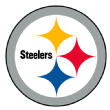
1. Le'Veon Bell, RB, Pittsburgh Steelers
Two suspensions in two years had the Steelers wondering about Bell's off-the-field decision-making. His talent was never a question, however. He's the franchise running back being compared to Marcus Allen. He could get the franchise tag this offseason.
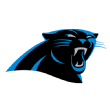
2. Kawann Short, DT, Carolina Panthers
General manager Dave Gettleman won't let Short leave like Josh Norman did, but it would help the locker room if the defensive tackle can get a long-term deal instead of a franchise tag. Short is a dominating force in the middle of the defense who is coming off an inconsistent season. He had 11 sacks in 2015 and only six in 2016.
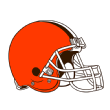
3. Jamie Collins, OLB, Cleveland Browns
The Browns sent a third-round pick to the Patriots this season in exchange for Collins, with the intention of signing the free-agent-to-be to a long-term deal this offseason. They were able to do that on Jan. 23, as Collins inked a four-year deal worth $50 million total and $26.5 million guaranteed.
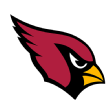
4. Chandler Jones, OLB, Arizona Cardinals
Coach Bruce Arians has already stated the Cardinals' intentions. Arians said Jones, who had 11 sacks this season, will be franchised if he doesn't get a long-term deal.

5. Kirk Cousins, QB, Washington Redskins
The Redskins might hesitate to pay Cousins $24 million per year on a long-term deal, but they simply can't let him hit the open market. At the least, he will be franchised.
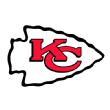
6. Eric Berry, S, Kansas City Chiefs
Berry beat cancer and returned to being one of the best safeties in the league. The question is whether he will get a long-term deal or be franchised for a second straight year.
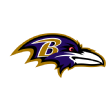
7. Brandon Williams, DT, Baltimore Ravens
Williams has blossomed into one of the best interior defensive linemen in the league. He stops the run, and the Ravens have to stop him from leaving for a big-money deal in free agency.
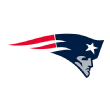
8. Dont'a Hightower, ILB, New England Patriots
The Patriots have $66 million in cap room and opted to trade away Collins and Jones, who both rank in the top five of this list. Hightower stands at the front of the line for a big payday from New England.

9. Alshon Jeffery, WR, Chicago Bears
This is an interesting decision for the Bears. He might not be a pure No. 1 receiver, but the Bears don't have much proven talent left at receiver or tight end. Can they afford to let Jeffery go?

10. Calais Campbell, DE, Arizona Cardinals
Franchising Jones could force the Cardinals to part ways with Campbell, one of the best 3-4 defensive ends in football. He turns 31 this year.

11. Dontari Poe, DT, Kansas City Chiefs
Poe is a force in the middle of the Chiefs' defense, but it might be hard for Kansas City to keep Berry and Poe because of its salary-cap situation.
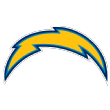
12. Melvin Ingram, OLB, San Diego Chargers
Ingram is the perfect pass-rusher to work with defensive end Joey Bosa, who made a major impact as a rookie. San Diego needs to keep them together for years.
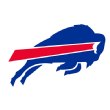
13. Stephon Gilmore, CB, Buffalo Bills
The Bills might have to franchise Gilmore because he is one of the best corners on the market. He could get a big offer if he makes it to free agency.
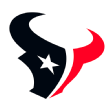
14. A.J. Bouye, CB, Houston Texans
What a story. Bouye rose from an undrafted free agent in 2013 to become one of the better young cornerbacks in the league. It might be hard for the Texans to keep the 25-year-old.

15. Jason Pierre-Paul, DE, New York Giants
JPP doesn't want to get another franchise tag, so the Giants have to find a way to keep their franchise defensive end. He had seven sacks in 12 games this season.
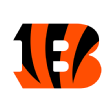
16. Kevin Zeitler, OG, Cincinnati Bengals
Zeitler, one of the best guards in the league, figures to get between $8 million and $10 million per year.
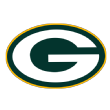
17. T.J. Lang, OG, Green Bay Packers
The Packers have $18.75 million a year tied up with tackles Bryan Bulaga and David Bakhtiari, but they can't lose Lang, who is making $5.2 million and just made his first Pro Bowl.

18. Pierre Garcon, WR, Washington Redskins
In a contract year, the 30-year-old Garcon caught 79 passes for 1,041 yards, which puts the Redskins in a tough position to see if they can keep him and DeSean Jackson.

19. Ricky Wagner, OT, Baltimore Ravens
The Ravens stole Wagner off a compensatory pick, and he has become one of the NFL's top right tackles.

20. Martellus Bennett, TE, New England Patriots
Bennett -- 55 catches and seven touchdowns in 2016 -- has meant enough to the Patriots' offense to earn at least $7 million a year.

21. Trumaine Johnson, CB, Los Angeles Rams
The Rams made a mistake in letting Janoris Jenkins sign with the Giants last offseason, and they can't afford to lose Johnson after they franchised him a year ago.

22. Terrelle Pryor, WR, Cleveland Browns
Pryor was the Browns' best wide receiver -- 77 catches for 1,007 yards -- and he might have been their best quarterback in 2016. He earned a nice payday.

23. Jabaal Sheard, DE, New England Patriots
Sheard had a rocky season with the Patriots. At one point, he lost his starting job, and his sack numbers went from eight to five. But he does have the ability to rush the quarterback.

24. Andrew Whitworth, OT, Cincinnati Bengals
Whitworth seems to be getting better as he gets older. At 35, he ranks among the best left tackles in football.

25. DeSean Jackson, WR, Washington Redskins
Jackson had his second 1,000-yard season in three years with the Redskins. After averaging 17.9 yards per catch, he showed that he is as dangerous as ever.
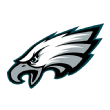
26. Bennie Logan, DT, Philadelphia Eagles
Logan is a solid tackle who can play in a 4-3 or 3-4 defense.

27. Kenny Britt, WR, Los Angeles Rams
After what might be considered a disappointing five-year tenure with the Tennessee Titans, Britt became a reliable receiver during his three years with the Rams. He had his first career 1,000-yard season.

28. Tony Jefferson, S, Arizona Cardinals
It seems like every safety who plays for the Cardinals becomes a solid player. Jefferson had a great year.
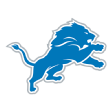
29. Larry Warford, OG, Detroit Lions
Warford is a sleeper among the guards. Although his name might not be on everybody's radar, he has 57 starts and is a solid blocker.

30. Riley Reiff, OT, Detroit Lions
Reiff might not have lived up to his billing as a former first-round pick, but he offers a team the flexibility of using him at left or right tackle.

31. Johnathan Hankins, DT, New York Giants
Hankins is a quality tackle whose play is improving next to Damon "Snacks" Harrison.

32. Barry Church, S, Dallas Cowboys
Church doesn't get a lot of attention outside of Dallas, but he has been a rock at strong safety for the Cowboys the past four years.

33. T.J. McDonald, S, Los Angeles Rams
McDonald has good size and range at strong safety.
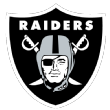
34. Latavius Murray, RB, Oakland Raiders
Murray has 1,000-yard ability and is a good leader in the locker room.
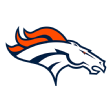
35. Sylvester Williams, DT, Denver Broncos
The Broncos didn't exercise the fifth-year option for Williams, but the former first-round pick is a solid tackle.
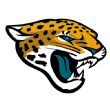
36. Luke Joeckel, OG, Jacksonville Jaguars
It's didn't work out for the Jaguars after they made him the second overall pick in the 2013 draft in hopes that he would be their left tackle for a decade. He might be a better guard down the road. He still has some value and is only 25.

37. Eddie Lacy, RB, Green Bay Packers
If Lacy can keep his weight down, he can be a tough, physical runner in the style of Marshawn Lynch. After an ankle injury cut his season short, his value went down.

38. Zach Brown, ILB, Buffalo Bills
The Bills struck gold in signing him to a one-year, $1.25 million contract. He ended up being the third alternate to the Pro Bowl.
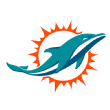
39. Kenny Stills, WR, Miami Dolphins
Stills averaged 17.3 yards per catch for the Dolphins and is an explosive player in any three-receiver set.

40. Lawrence Timmons, ILB, Pittsburgh Steelers
Timmons has been an anchor at inside linebacker for the Steelers for 10 years, and it's hard to believe he's only 30.

41. Kevin Minter, ILB, Arizona Cardinals
Minter is a good inside linebacker whom the Cardinals need to re-sign.

42. Devin Taylor, DE, Detroit Lions
Taylor had seven sacks as an inside pass-rusher in 2015 and did well as a starter last season.

43. Robert Woods, WR, Buffalo Bills
Woods might not be a No. 1 receiver, but he's a solid No. 2, and he's only 24.

44. Logan Ryan, CB, New England Patriots
People talk about the great play of Malcolm Butler at one cornerback spot, but they ignore how well Logan, who turns 26 next month, plays on the other side.

45. Manti Te'o, ILB, San Diego Chargers
Te'o might not be the biggest inside linebacker in a 3-4, but the former second-round pick makes plays. He suffered a torn Achilles early in the 2016 season.
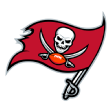
46. Mike Glennon, QB, Tampa Bay Buccaneers
Glennon, who is 5-13 in his career, is a starting option for a team in need of a quarterback. The QB market isn't good.

47. Morris Claiborne, CB, Dallas Cowboys
Claiborne signed a one-year, $3 million contract and ended up having his best season as a Cowboy, which set him up for a better payday.

48. Chris Baker, DE, Washington Redskins
Baker just completed a three-year, $9 million contract, but he is a good end in a 3-4 defense.

49. Prince Amukamara, CB, Jacksonville Jaguars
The Jaguars signed Amukamara to a one-year, $5 million contract last year and got a good year out of him.

50. Kyle Juszczyk, FB, Baltimore Ravens
Juszczyk is the best fullback in the league, and the Ravens keep finding new ways to use him.
